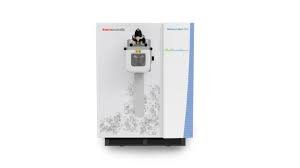Thursday, 13 November 2025
Food Standards Australia New Zealand releases nutrient database
The Australian Food Composition Database contains comprehensive nutrition information on more than 1,500 foods available in Australia. Looking up how much fibre is in dates, the protein content of quinoa…

The Australian Food Composition Database contains comprehensive nutrition information on more than 1,500 foods available in Australia.
Looking up how much fibre is in dates, the protein content of quinoa or the amount of caffeine in chocolate is now easier with the release of Food Standards Australia New Zealand’s (FSANZ) refreshed nutrient database.
FSANZ Chief Executive Officer Mark Booth said a number of changes had been made to the Australian Food Composition Database (previously called NUTTAB) including an improved web interface and enhanced search to help users find what they’re looking for.
“Other changes include introducing custom serve sizes to help users easily calculate the nutrient content based on what they eat (any gram or millilitre amount). Common serve sizes are also provided such as a 375 mL can or 600 mL bottle, in addition to 100 mL,” Mr Booth said.
“New data has been included for highly consumed foods such as milk and bread; and new foods added such as rocket, quinoa, oat and rice milk, gluten free flour and pasta, and green tea.
“Identifying foods has been improved by assigning each food a unique code (the Public Food Key) which replaces the previously used Food ID. The Key will be consistent across all of our food composition databases.
“We have also provided a core set of 54 nutrients for all foods, which means that every food in the database will have a value for at least these 54 nutrients. Additional nutrients are also reported where quality data is available.
“If you are a researcher, dietitian, nutritionist or if you want to find out what’s in food to help you make healthy food choices, then I encourage you to check out our new database.”
The Australian Food Composition Database is available free of charge at www.foodstandards.gov.au/afcd as a searchable database or as downloadable electronic files.
The Australian Food Composition Database contains comprehensive nutrition information on more than 1,500 foods available in Australia. Some examples of the information you can find in the database are below.
-
A 50 gram serve of dark chocolate contains 30 mg of caffeine. A 250 mL cup of black tea contains 50 mg and a 50 mL espresso contains 145 mg of caffeine.
-
The vegetable that contains the highest amount of water per 100 g is cucumber at approximately 96%. Strawberry is the fruit with the highest water content at 92%. Keep cucumbers and strawberries on hand to help stay hydrated this summer!
-
Did you know that soy flour has almost 5 times more protein than wheat flour? Per 100 g, wheat flour contains 10 g protein while soy flour contains 49 g.
-
A 50 g serve of dates will give you with approximately 5 g of dietary fibre, which is over 15% of the recommended daily intake*.
-
A raw unpeeled apple has 8 times more fibre (4.4 g) than a cup of apple juice (0.5 g).
-
Look up nutrition data on some of Australia’s most iconic foods such as Vegemite, Tim Tams and Lamingtons as you plan your Australia Day menu.
Technology
Tetra Pak opens Product Development Centre in France
Nov 13, 2025 | Company News
MENU ORDER AI to launch app aimed at GLP-1 users and health-conscious diners
Nov 10, 2025 | Company News
Harnessing Quantum AI for Greener Minds and Healthier Futures
Nov 10, 2025 | Interaction
Food Testing
Intertek acquires Costa Rican testing business Suplilab
Nov 07, 2025 | Company News
Thermo Fisher Scientific launches Orbitrap mass detector for food safety testing
Oct 24, 2025 | Company News
ADM advances quality capabilities with opening of new Central Milling Laboratory
Oct 16, 2025 | Company News
More Popular
Syren Spreads launches spoonable adaptogenic beauty chocolate
Nov 13, 2025 | Company News
Gunpowder Irish Gin expands with new Italian Fig & Laurel Expression
Nov 13, 2025 | Beverages
8 winter foods that transform your skin by healing your gut first
Nov 13, 2025 | Beverages






